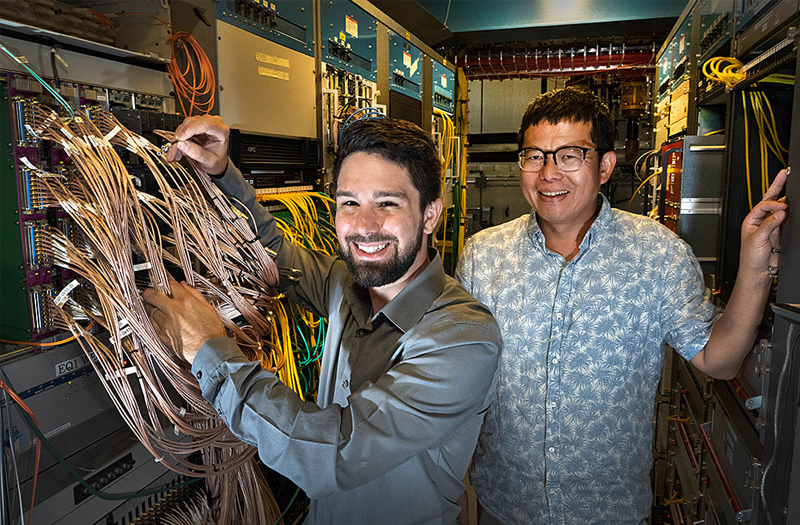Everything relies on quantum mechanics, even if we don’t realize it. It explains the behavior of the tiniest particles that make up everything we know, from atoms on down. However, quantum mechanics seems strange to us because it seems to contradict the physics of the everyday world.
Entanglement is one of the weirdest phenomena in quantum mechanics. Quantum entanglement is when two particles have a special relationship to each other. They don’t and can’t act independently. Instead, each particle’s quantum state is linked to the other’s. If one’s state is measured, the other’s state is fixed. This happens no matter how geographically far apart the particles are from each other – potentially other sides of the galaxy. Understanding entanglement is important to building quantum computers and quantum networks.
Until recently, scientists thought entanglement only occurred between two identical particles. All of the examples of entanglement they had observed were between particles of light or identical electrons.
But earlier this year, scientists at the Department of Energy’s (DOE) Brookhaven National Laboratory found a new type of quantum entanglement. This entanglement was between two particles that were dissimilar – they had different charges.
The scientists found this through their research at the Relativistic Heavy Ion Collider (RHIC), a DOE Office of Science user facility. Most of the time, RHIC is used to replicate the conditions just after the Big Bang. It helps us better understand the beginning of the universe. However, nuclear physicists also use it to study how matter behaves today. They want to know how quarks and the gluons that hold them together in protons and neutrons are arranged. They also want to understand how gluons hold those building blocks of our universe together.
This research is how they found the new form of quantum entanglement. RHIC collides ions of heavy elements, like gold. Ions are atoms with electrons stripped off of them. Usually, the ions smash into each other and separate out into quarks and gluons.
But in this study, the scientists examined ions that passed by each other extremely closely without colliding. The ions have a cloud of particles of light (photons) that surround them. As the two ions pass by, the cloud of photons of one ion interacts with the gluons in the other ion. This interaction results in an intermediate particle that falls apart. The intermediate particle decays into two differently charged pions, another type of exotic particle. The pions then strike the particle detector. The detector can measure how fast the pions are moving, what direction they’re moving, and the angle at which they hit the detector. Like detectives, the scientists trace backwards to get information about the photons surrounding the ions. The photons reveal information about the gluons, like a high-powered microscope.
The new form of quantum entanglement occurs between the pions. This form of entanglement makes it possible to peer inside the ions in RHIC in a way that scientists have never before been able to. It provides clarity to the measurements of gluons that’s not possible otherwise. Previous measurements only provided information about how dense gluons were across the whole nucleus. That doesn’t give a lot of details about how they are distributed. This new technique allows scientists to go from having essentially a one-dimensional image to a two-dimensional one.
This new “map” of the nucleus is at the scale of quadrillionths of a meter. But it lines up much better with theoretical predictions than previous observations did. Sometimes, even the smallest measurements can have big effects on our understanding of the universe.
Originally published at https://www.energy.gov/science/articles/new-form-quantum-entanglement-gives-insight-nuclei
The post New Form of Quantum Entanglement Gives Insight into Nuclei first appeared on Social Gov.

